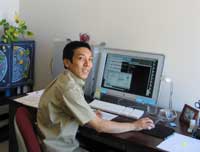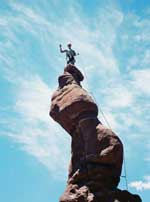The Student Angle: Developing New Computer Models to Preserve "the View from the Top"
 |
The 1997 Kyoto Protocol altered Takanobu Yamaguchi's plans. As the Earth's climate system changed and scientists grappled with understanding what was driving that change, Tak's interest in the environment grew. No longer satisfied with a career in theoretical physics, Tak began exploring environmental fields. He thought that he could expand on his physics training to understand the Earth system and global changes in the weather, and whether we are causing some of those changes. A physics professor convinced him that atmospheric science was the advanced degree he was looking for.
Since joining Professor David Randall's research group, Tak has focused his interest on improving computer models of the planetary boundary layer, as well as our understanding of the physical phenomena of stratocumulus clouds. Stratocumulus clouds are important for the Earth's energy budget because they are bright and reflect a large portion of the solar radiation, which is the primary source of the energy driving the atmospheric and oceanic circulations.
 |
When he's not unraveling the puzzle of climate change, Tak is working on a different kind of puzzle as he negotiates unchartered territory in the national parks of Colorado, Utah and Wyoming. "Whenever I have free time, I go to the gym or climb outdoors. There is a puzzle aspect to rock climbing that I like. You have to keep balanced as you reach for different rock holds, trying to get the balance correct, and you have to think each time where to put each hand and foot."
And rock climbing gives Tak a chance to appreciate the environment that he is helping preserve through his global climate studies. "When I am climbing, I always feel that nature lets me climb. This feeling makes me think about the environment and want to treat the environment ethically. And the view from the top is very nice."